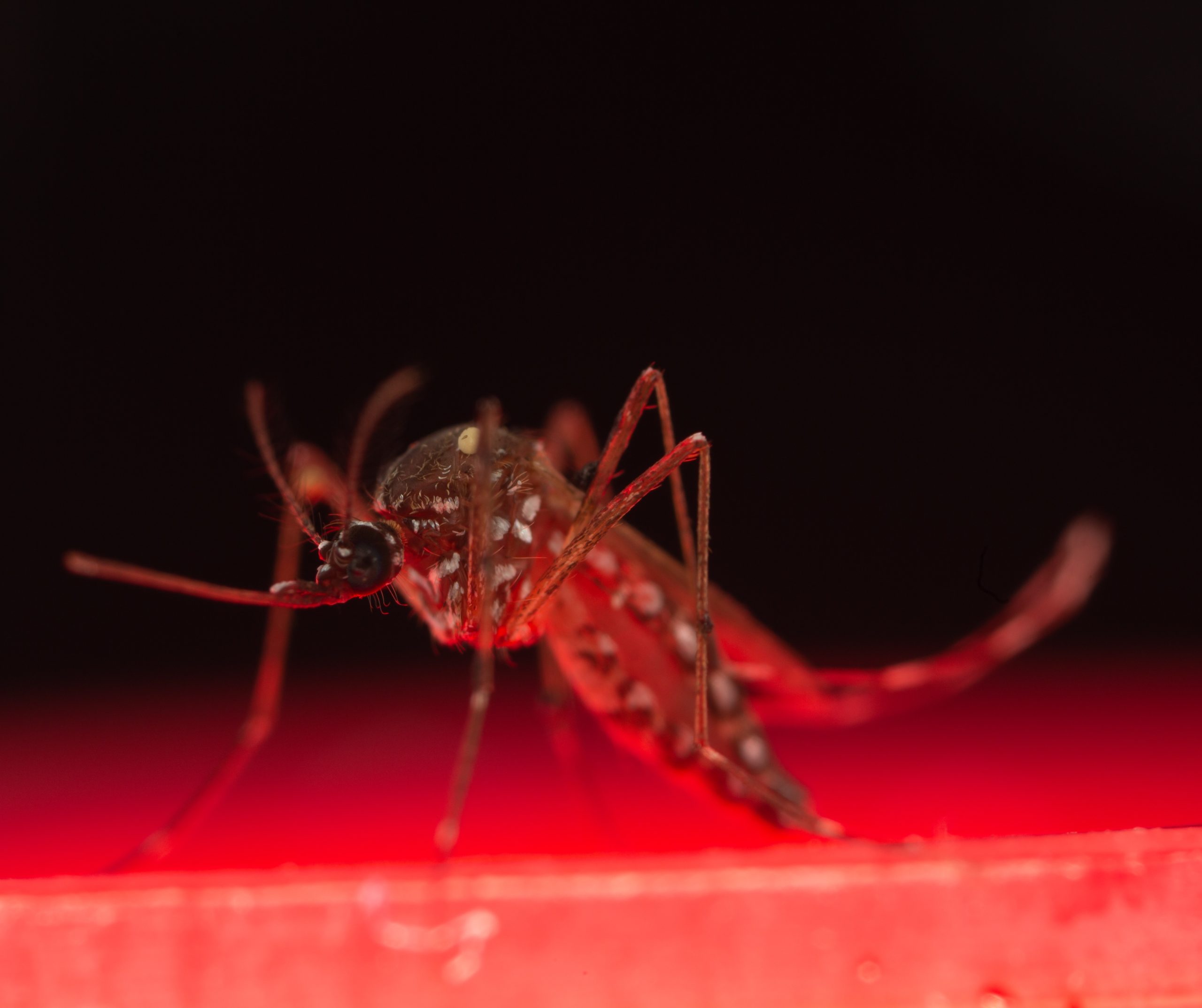Mozzies – they’re known for being pesky insects with an annoying bite. But these tiny, and seemingly innocent, creatures pose massive threats to human health. Because they can carry mosquito-borne diseases.
Mosquito research in Australia
More than 40 percent of people across the world are vulnerable to mosquito-borne diseases. In Australia, there are several native and invasive mosquito species responsible for spreading a range of infectious diseases.
Our researchers have spent years understanding mosquito dynamics to better protect Australian communities. As a result, they’ve been developing new environmentally-friendly methods to eliminate the threat of mosquitoes to our health.

The Aedes aegypti mosquito.
Mozzies under the microscope
The Aedes aegypti mosquito – also known as the yellow fever mosquito – is an invasive species. This mosquito is found across Northern Queensland and typically tropical countries. It is responsible for spreading dengue, yellow fever and Zika viruses.
In a landmark trial, our team of international researchers have been able to successfully eradicate an isolated population of the Aedes aegypti mosquito in Northern Queensland.
Working with the community in Innisfail, North Queensland, our researchers were able to study the local population of yellow fever mosquitoes. This involved undertaking a population suppression experiment to see if we could stop the mosquito from spreading.
A winning way with Wolbachia
We used an innovative population control method, called the Incompatible Insect Technique (IIT). It applies a natural bacteria called Wolbachia. This bacteria is present in 60 percent of insect species. We’ve successfully used this bacteria to suppress mosquito-borne disease in more than 13 countries, including Australia.
The IIT involves mass releases of incompatible male Aedes aegypti mosquitoes. They typically search out and mate with wild females, preventing the production of viable offspring.
Our trial, recently published in PNAS, involved the release of three million incompatible Aedes aegypti males. The release was across three treatment sites in North Queensland, over a 20-week period, in 2018.
The trial found more than 80 percent of the Aedes aegypti population was suppressed. One trial site was devoid of the mosquitoes at the start of the following summer, with a 97 percent reduction over the entire period.
Our trial was also the first demonstration of bidirectional incompatibility of the bacteria. This meant two new and different Wolbachia strains interacted with each other in the wild hosted by the Aedes aegypti mosquito. This has shown it to be an effective population suppression method, which maintains its effect for well over a year into the following season.
The outcomes of the trial highlight the importance of Wolbachia. It has proven to be an effective method for controlling mosquito populations and the spread of mosquito-borne disease.
Ingredients for success
The four-year project involved considerable levels of regulatory and risk planning. This included a formal risk assessment and population risk modelling for Australian Pesticides and Veterinary Medicines Authority (APVMA) approval. We also worked on the development of new technologies to evenly release mosquitoes across entire towns and mechanically sort male from female mosquitoes with high fidelity (>1:1,000,000 error rate).
We tested novel methods for estimating male movement and measuring mating rates in a wild population. In addition, we undertook extensive community engagement.
An international team of researchers worked on this project. Researchers were from CSIRO, The University of Queensland, Verily Life Sciences, QIMR Berghofer Medical Research Institute and James Cook University.
Long-term approach to the global mosquito challenge
We are taking a long-term approach when addressing the challenge of mosquito-borne disease in vulnerable communities. New technologies from this breakthrough research will provide new tools to prevent the introduction of invasive mosquitoes into our major cities. Furthermore, this work holds the potential to eradicate mosquito-borne disease worldwide.


8th October 2021 at 9:48 am
I understand this APPLICATION of your research is limited to Far th qld and MIGHT stop other diseases spreading south. Whats doing about anopheles mosquito which is already spreading Ross River Fever in Sth east victoria…specifically Loch Sport on the Gippsland lakes please? its a small community isolated all round by national and state forest…